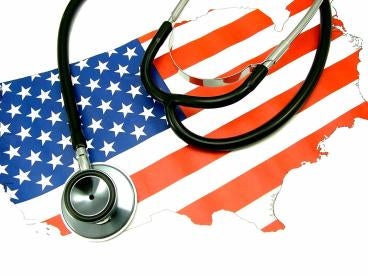On Thursday, March 11, President Joe Biden signed the $1.9 trillion American Rescue Plan Act into law [P.L. 117-2]. The American Rescue Plan was one of the President’s top priorities and represents his first significant legislative accomplishment of the 117th Congress. The package is one of the largest economic relief bills in history. In the last year, the federal government has approved over $5 trillion to respond to the COVID-19 pandemic and provide economic support for individuals, businesses, state and local governments. Unlike previous relief packages that were the result of significant bipartisan negotiation, the American Rescue Plan was passed using the budget reconciliation process that allowed for passage with a simple majority in both the House and Senate.
The American Rescue Plan extends a number of Federal COVID-19 pandemic programs, along with making a number of changes to health care programs and providing billions of dollars in new funding to nearly all sectors of the U.S. economy. The legislation is now in the implementation phase with the Biden Administration beginning to distribute funds and issuing guidance to implement the different provisions.
Below are highlights of several key health care provisions in the American Rescue Plan:
Rural Health Funding
The law provides an additional $8.5 billion for rural health care providers for expenses and lost revenue attributed to the COVID-19 pandemic. The funds will be administered by the Department of Health and Human Services (HHS) in a similar manner as those funds previously provided by Congress to the Provider Relief Fund. The law also provides the U.S. Department of Agriculture (USDA) with $500 million to establish a temporary emergency rural development grant program to help rural health care providers respond to COVID-19. Funds will be available to help:
-
Increase capacity for vaccine distribution;
-
Provide medical supplies to increase medical surge capacity;
-
Reimburse for revenue lost during the COVID–19 pandemic, including revenue losses incurred prior to the awarding of the grant;
-
Increase telehealth capabilities, including underlying health care information systems;
-
Construct temporary or permanent structures to provide health care services, including vaccine administration or testing;
-
Support staffing needs for vaccine administration or testing; and
-
Engage in any other efforts to support rural development determined to be critical to address the COVID–19 pandemic, including nutritional assistance to vulnerable individuals, as approved by the Secretary.
Medicaid Coverage of Vaccines and Treatments
The law requires Medicaid programs to cover the cost of COVID-19 vaccines and treatments with no beneficiary cost-sharing. The Federal Medical Assistance Percentage (FMAP) would also increase to 100 percent for vaccine administration until one year after the end of the public health emergency (PHE). The law would also allow states to provide the same coverage for the uninsured. Additionally, the law expands the Medicaid Drug Rebate Program to include COVID-19 treatments and ends the cap on Medicaid drug rebates beginning in 2024.
Medicaid Expansion
The law includes new incentives for states to expand their Medicaid programs consistent with the original intent of the Affordable Care Act (ACA). There are currently 12 states that have not yet expanded their Medicaid programs. These non-expansion states would be eligible for a 5 percent increase in the ACA’s expansion FMAP for two years. The law also includes optional Medicaid expansions for postpartum care, mobile crisis intervention programs, community-based services, and additional funding for Urban Indian and Native Hawaiian Health Systems.
Treatment of DSH Funds during PHE
The law amends the Families First Coronavirus Response Act [P.L. 116-127] to ensure that total Disproportionate Share Hospital (DSH) payments that a state may make during a fiscal year is equal to the total DSH payments that the state could have made for such fiscal year without the increased FMAP.
Nursing Home Funding
The law includes $250 million to fund state-level nursing facility strike teams, along with $200 million to support skilled nursing facilities with COVID-19 infection control.
Medicare
The law made two changes to Medicare. First, the Centers for Medicare and Medicaid Services (CMS) can waive the requirement that ambulance services include transportation to a hospital. Second, CMS will need to reinstate the rural floor for the wage index that was applied to hospitals in states with all-urban populations.
Private Health Insurance
The law provides a 100 percent federal subsidy through September to offset the premium costs of COBRA coverage for unemployed Americans. To help cover the costs, employers would be eligible for refundable tax credits against their Medicare payroll taxes. The law also expands the ACA’s premium tax credits and ensures that unemployed individuals are able to qualify for cost-sharing reduction credits under the ACA.
Vaccines, Testing, & Medical Supplies
The law provides the Centers for Disease Control and Prevention (CDC) with $7.5 billion for vaccine distribution efforts, along with an additional $5.2 billion for the Biomedical Advanced Research and Development Authority (BARDA) to procure vaccines and supplies. The law provides approximately $50 billion to increase testing capacity and increase the use of enhanced genomic sequencing. To address medical supply chain shortfalls, the law also provides $10 billion for the federal government to use the Defense Production Act (DPA) to expand domestic production of needed medical supplies and vaccines.
Health Care Workforce Support
The law seeks to bolster the public health workforce by providing $7.6 billion to assist with the demands of responding to COVID-19. The law also provides $7.6 billion for community health centers, $800 million for the National Health Service Corps, $200 million for the Nurse Corps, and $330 million for teaching health centers.
Federal, State, and Local Aid
The law provides over $350 billion for state, local, tribal, and territorial governments to respond to the COVID-19 pandemic. The funds can be used for a variety of programs, including assistance for households, small businesses, nonprofits, and premium pay or grants to essential employees. The funds will also be available to provide government services impacted by revenue reductions and allow states and local governments to make investments in capital projects, including expansions of broadband infrastructure.
The law also provides an additional $50 billion in funds to the Federal Emergency Management Agency’s (FEMA) Disaster Relief Fund to respond to the COVID-19 pandemic and other major disasters. FEMA has been one of the leading federal agencies partnering with state and local governments to administer and distribute COVID-19 vaccines.





 i
i

